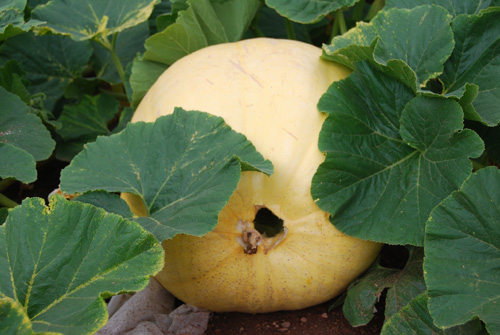
Squash bug adult-photo courtesy University of Minnesota
Well it’s that time of year-Squash bugs Ughh! You can control squash bugs in your organic garden. Here are some ORGANIC things you can do to deter squash bugs:
-Plant a crop late in the season if possible. Many areas of the country only have one generation of squash bugs and if you plant later you may miss them. If you live in the south where they have 2 generations, read on..

squash bug nymphs-photo courtesy University of Minnesota
–Cover your plants with row cover to keep them off. This works beautifully but you may have to piece some row covers together to cover some of the larger plants. I use clothes pins to clip them together.
-Use Neem. It is an organic pesticide (and an added benefit is a fungicide). It must be sprayed very early before the bees come out or at dusk when they aren’t around as it won’t hurt them if it is not a direct hit as they only visit the flowers and it is a contact spray. I think it mostly helps deter the squash bug.

squash bug eggs
-Inspection, hand picking and kill the little buggars. (now you know how strongly I feel about them) By far the most labor intensive but very effective. I hate to handle squash bugs (or any bug-I’m squeamish) so I use gloves, a bucket of soapy water (it drowns them) and inspect each leaf underneath to look for nymphs, eggs, or adults. The adults I throw in the soapy water and if a leaf is really loaded with nymphs, I cut it off and throw it in the soapy water otherwise I just squish them. For the eggs (they are a cluster of rust colored eggs attached to the underneath side of the leaves) I usually just tear off or cut out that portion of the leaf (it won’t hurt it) and throw them into the soapy water. The key to keeping it under control, is to catch them before they multiply too much. I looked up the life cycle online of the squash but and it goes from egg to nymph in 7-10 days so if you get out there every 7 days you will catch them before they get out of control and multiply. Most people wait too late. Get out there and look at your plants!
-Companion planting. I think it was in ‘Organic Gardening Magazine that I read under ‘letter to the editors’, that a lady wrote in to say that you could deter squash bugs on pumpkins, winter squash, summer squash and marrows with diluted/strained onion juice. Evidently just grind one or two up, put it in gallon of water and strain the onions out so your sprayer doesn’t clog. Well she went on to write that doing that was too much work and she plants onions bulbs with her squash every year and hasn’t seen a squash bug since. Well I did the same for my summer squashes, but not for my winter squashes. There have been no squash bugs on the summer squash but I found one on the marrow which means there will be more. I told one of friends that owns a garden nursery about the onions and he said it was too late to plant onions but he was going to throw some chopped onions out in his patch. I’m doing the same today for the marrow and winter squash and will let you know what happens! It can’t hurt and maybe it’ll work!



















